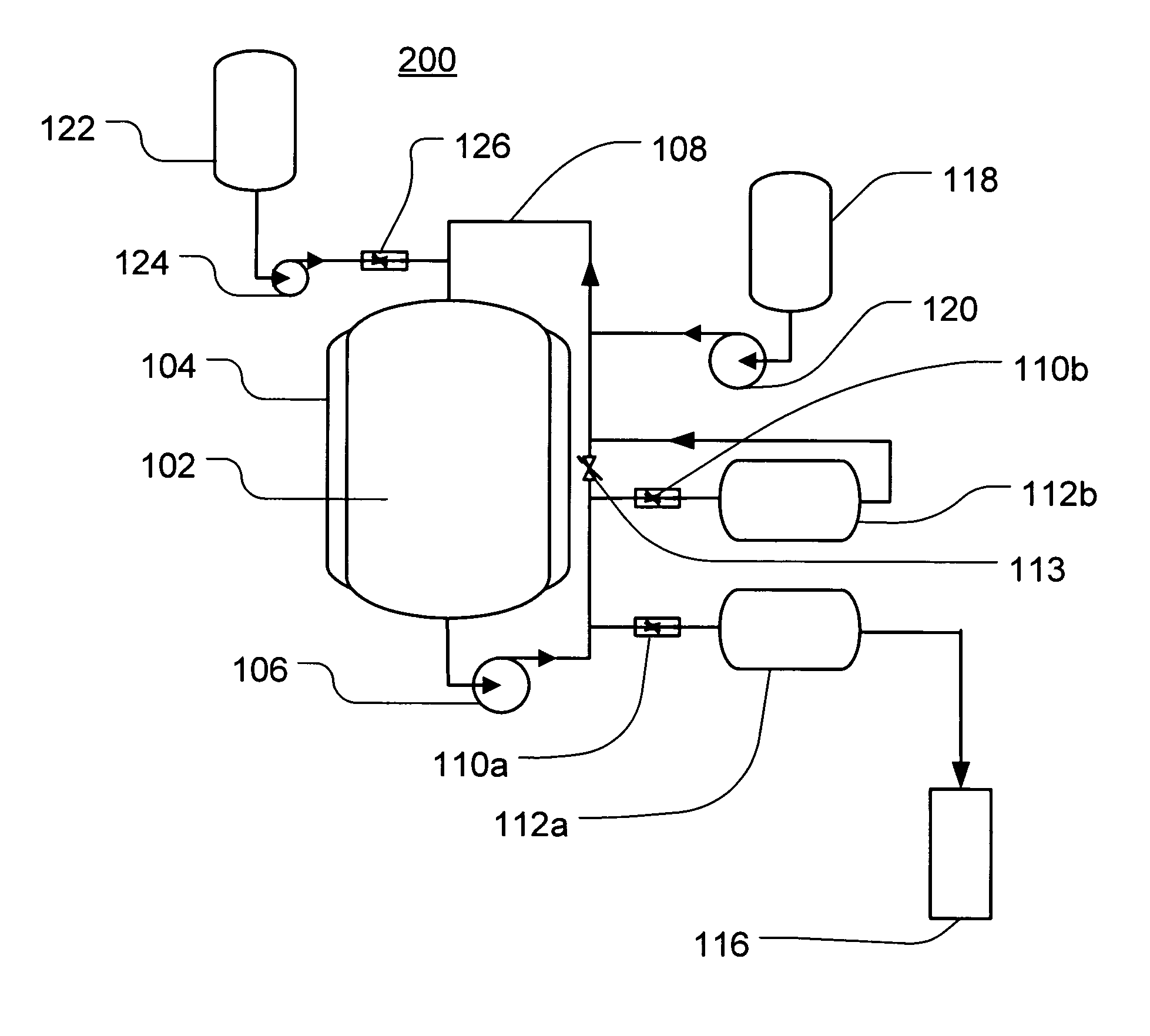Method of manufacturing nanoparticles
a technology of nanoparticles and nanoparticles, which is applied in the direction of catalyst activation/preparation, physical/chemical process catalysts, metal/metal-oxide/metal-hydroxide catalysts, etc., can solve the problems of nanoparticle clusters having sizes in the micron range, the complexity of the method, the cost of particles, etc., and achieves less expensive practice. , the effect of reducing the safety and environmental problems
- Summary
- Abstract
- Description
- Claims
- Application Information
AI Technical Summary
Benefits of technology
Problems solved by technology
Method used
Image
Examples
example
[0055]Platinum nanoparticles were generated in a reactor system generally corresponding to the example embodiment illustrated in FIG. 2 using an aqueous Pt reaction solution of Na2Pt(OH)6 at a Pt concentration of 465 ppb (by total weight). As will be appreciated by those skilled in the art, the concentration range of the chemical species can generally be controlled from, for example, about 1 ppb to several ppm, without substantial difficulties, depending on both the desired average particle size and the desired particle size distribution.
[0056]Unlike the conventional methods discussed above, the present method does not require additional organic or inorganic compounds. The concentrated chemical feed, for example a masterbatch composition, can be injected into the recirculation system at a point upstream from the main reactor vessel where the volume and turbulence of the flow is sufficient to mix and substantially dilute the concentrated chemical feed before it enters...
PUM
| Property | Measurement | Unit |
|---|---|---|
| size | aaaaa | aaaaa |
| size | aaaaa | aaaaa |
| particle size | aaaaa | aaaaa |
Abstract
Description
Claims
Application Information
 Login to View More
Login to View More - R&D
- Intellectual Property
- Life Sciences
- Materials
- Tech Scout
- Unparalleled Data Quality
- Higher Quality Content
- 60% Fewer Hallucinations
Browse by: Latest US Patents, China's latest patents, Technical Efficacy Thesaurus, Application Domain, Technology Topic, Popular Technical Reports.
© 2025 PatSnap. All rights reserved.Legal|Privacy policy|Modern Slavery Act Transparency Statement|Sitemap|About US| Contact US: help@patsnap.com



